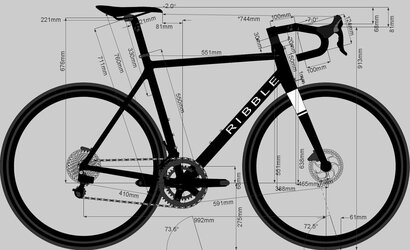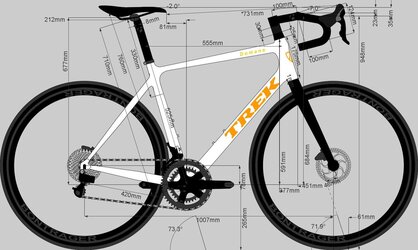At 5ft 10" looking at
that geometry and your pictures of you on it, yes you're at the upper end of what
Ribble list as a relevant choice for their 'M' and the lower end of 'L'. But; 'M' and 'L' can often not tell the whole story, you need to look at the geometry in greater detail and when you do I'd wager you'd be able to achieve a suitable 'bike fit' on either size.
Something I referenced in a
recent thread is that one thing I'd check on a drop bar bike of this type with a standard seat tube angle to match (normally around 73 degrees for a bike in the OP size) is to make sure the saddle is not set forward on the rails, if someone is struggling with the reach I often see that they move the saddle forward to reduce the reach, although this may
seem logical in effect it tips the rider forward increasing weight on their hands and arms, it can
feel a bit like you are doing
'a plank' on your bike, although the reach is reduced it often results in less comfort; which the rider will describe in just the same way the OP has. You will often see this very topic discussed as 'Saddle setback', 'Kops' (and the myth of Kops) or 'BMR (Body mass representation)'; there are quite a few useful online examples of how to set up your position, I have attached just one example that you may find useful. Note if one area of the 'fit' is wrong it can throw aspects of the set up out as well.
The Ribble is listed as an 'endurance' bike; just how much a designer dials back a frame/bike fit from a focused race bike does vary, that bike is actually closer to a race bike with a steeper head angle and lower front end than many designers will choose on their endurance ranges; compare that to say a Trek Domane (a very popular endurance bike) and you will see what I mean.
There is only so much you can work out from a few pictures on forum thread, a geometry chart and a rider's dimensions of course. Flexibility, range of motion, shoe and even hand size,
ankling (I'm sure a few of us know some 'toe-dippers' and 'heel-droppers'), muscle type and dimensions and each individuals riding style to name just a few things all play a part in what we are able to achieve on the bike interms of position and then influence the relevant bike type and size to accommodate it all. But, from what I can see at this stage by way of reassurance I repeat; yes it is more focused endurance bike than what I'd normally expect to see but there is a good chance that you should be able to get it to work.
Ideally there would have been value in a fitting prior to purchase, many bike fitters use a bike fit jig which could be set up to both the relevant sizes to help conclude which is the most suitable, then on collection they would fit you to that chosen bike and potentially make any relevant component changes, saddle and stem length for example to get it 'just right'.




